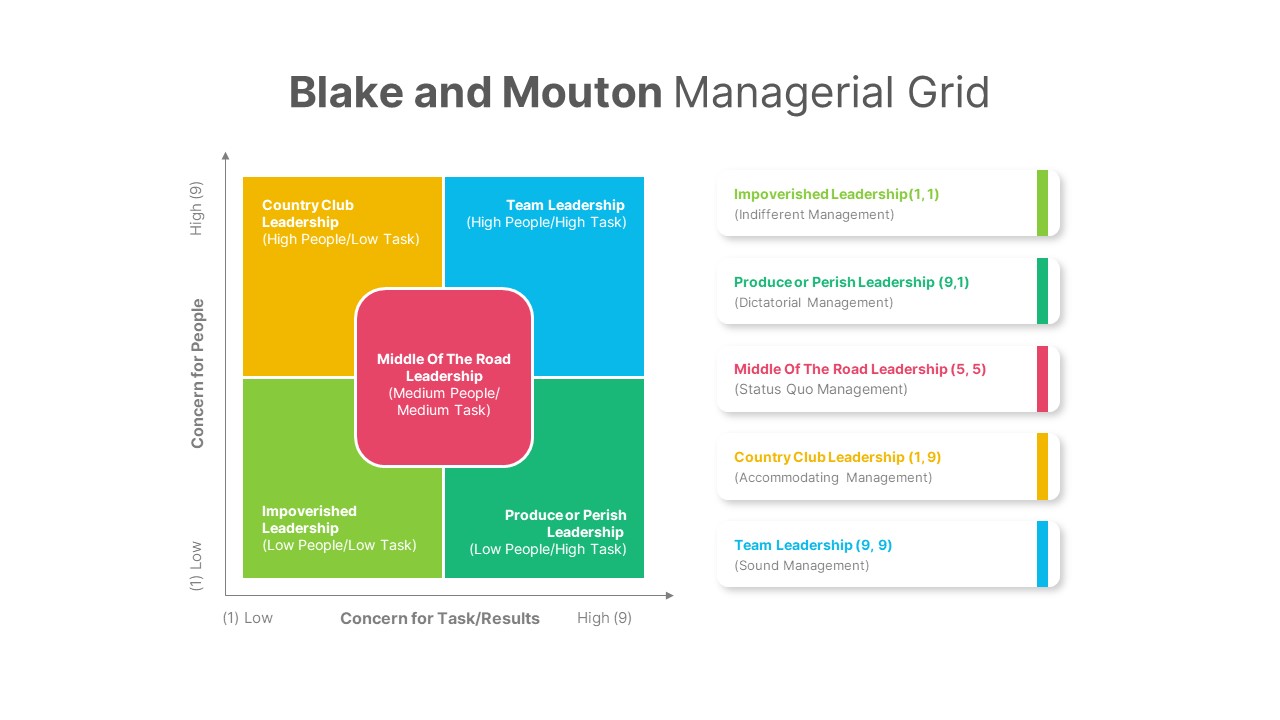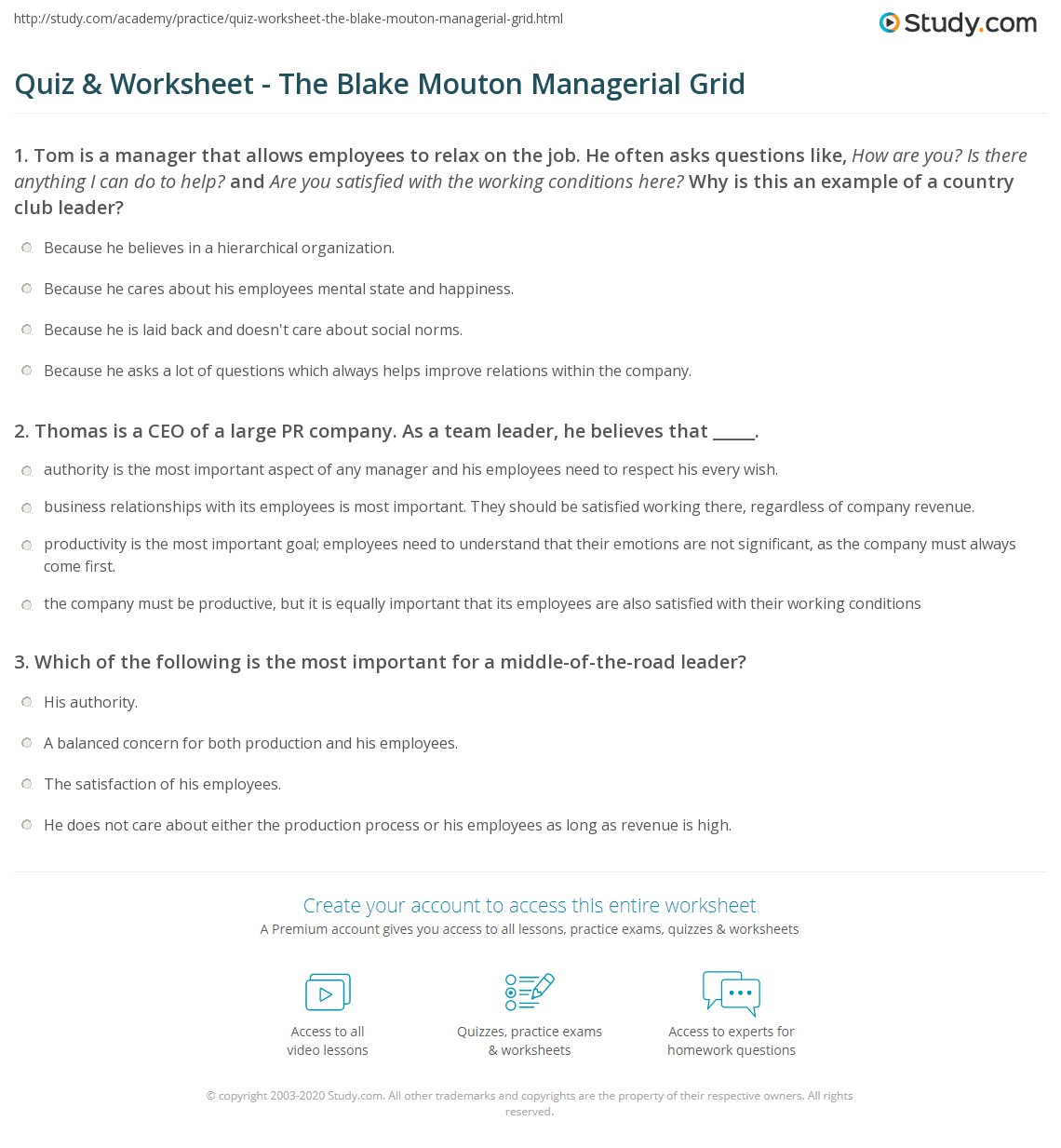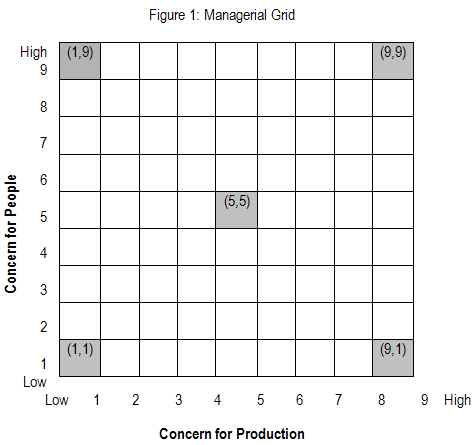The Blake Mouton Managerial Grid is a leadership model developed by Robert Blake and Jane Mouton in the 1960s. It is based on the premise that a leader's effectiveness is determined by where they fall on a grid with two dimensions: concern for people and concern for production.
At one end of the scale, leaders who have a high concern for people prioritize the well-being and development of their team members. These leaders tend to be supportive, democratic, and participative in their leadership style. At the other end of the scale, leaders who have a high concern for production prioritize task completion and efficiency. These leaders tend to be directive and autocratic in their leadership style.
According to the Blake Mouton Managerial Grid, the most effective leaders are those who balance both concerns for people and production. These leaders are known as "team leaders" and tend to use a participative leadership style that involves collaboration and input from team members. They recognize the importance of both individual and team development as well as meeting organizational goals and objectives.
On the other hand, leaders who prioritize either people or production to the exclusion of the other can be less effective. "Country club" leaders, who have a low concern for production and a high concern for people, may prioritize maintaining good relationships and creating a pleasant work environment at the expense of productivity. "Impoverished" leaders, who have a low concern for people and a high concern for production, may prioritize meeting goals and deadlines at the expense of their team's well-being and development.
Overall, the Blake Mouton Managerial Grid highlights the importance of balancing both concerns for people and production in order to be an effective leader. By considering the needs and goals of both individuals and the organization, leaders can create a positive and productive work environment that benefits everyone involved.
What is Blake and Mouton's Managerial Grid? A Detailed Overview

What constitutes a good manager? The ideology behind this is to make sure that employees can achieve a perfect 9, 9 with the help of this training. It ensures total commitment to working towards goal achievement. Interestingly enough this principle holds for the 1,9 leader as well. They may focus on the importance of wages and employment itself as a means for motivating team members to complete their daily tasks. It is often applied by companies on the edge of real or perceived failure, such as in crisis management. I try to lead from this quadrant as often as possible. The middle-of-the-road managers focus on average performance and production, and that is what they achieve.
Blake and Mouton Managerial Grid EXPLAINED with EXAMPLES

However, the Managerial Grid is criticised for basically neglecting the significance of the internal and external constraints, context, circumstances and situation. Identify ways to get the skills you need to reach the Team Leadership position. Hence, the organization manages to end up at an average, mediocre performance rate. They may also view the fear of being fired as a strong motivator for everyone on the team. However, a low focus on tasks can hamper production and lead to questionable results. He provides his employees with money and expects performance back.
Blake and Mouton Managerial Grid

That means you may not even be aware of how you might be sabotaging yourself and your team. This approach relies heavily on making subordinates feel that they are constructive parts of the organization by encouraging teamwork and commitment, involving them in decision-making, and showing respect and mutual trust. The team Leader as an ideal has moved to the ideal of the transformational leader and is someone who, according to leadership researcher Bernard Bass: Is a model of integrity and fairness; Sets clear goals; Has high expectations; Encourages; Provides support and recognition; Stirs people's emotions; Gets people to look beyond their self-interest; Inspires people to reach for the improbable. It was redefined as 9,1-1,9 management where the manager swings between two extremes. The drawback to this approach is that you can focus too much on personal areas than professional or productivity goals. Nothing is achieved and no one is happy. It is so-called as the subordinates here are expected to execute the task as directed and informed by the superiors.
Blake and Moutons Managerial Grid

You may be able to help train new managerial hires and model the organization's policies and practices to ensure a knowledgeable and reliable team. The leader is characterized as open-minded, flexible and one who inspires involvement. Learning about this tool can help you find your own management style to help you become a better leader. Based on the information generated from the grid, decide the necessary changes to be made. . This is often true, and it follows the ideas of Theories X and Y, and other participative management theories. Are subordinates satisfied with interpersonal relationships? This style of management will generally be considered ineffective.








